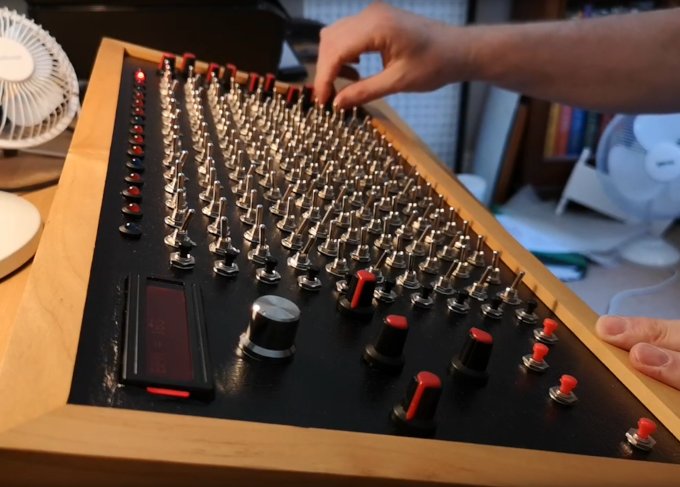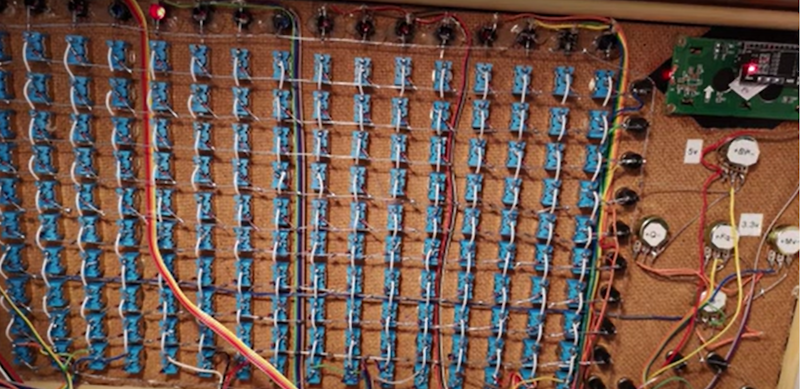Step sequencers have been around since at least the 1960s, and from the 1980s and beyond became a very common sight as the number and variety of digital instruments exploded.

This DIY Drum Machine from Robert Robert on YouTube is a unique blend of the two, with a huge number of switches and knobs up front, but a Teensy 3.6 and Audio Adaptor Board generating the beats behind the scenes.

Most step sequencers have 16 buttons with LEDs to indicate on/off status, which are reused in order to create multiple tracks and thus produce layered sounds. This device has a dedicated row of 16 switches for each of its ten tracks/samples, with 16 LEDs above them to indicate which note in the sequence is currently playing. Momentary switches on each row allow the same samples to be triggered at any time, and 10 potentiometers allow the volume of each sample to be adjusted, also effectively allowing a track to be muted. Four additional buttons and knobs allow a further four samples to be triggered at corresponding volumes. A 16×2 I2C LCD display and further knob allows configuration of parameters such as BPM. See it in action and learn more about its construction in the video below!